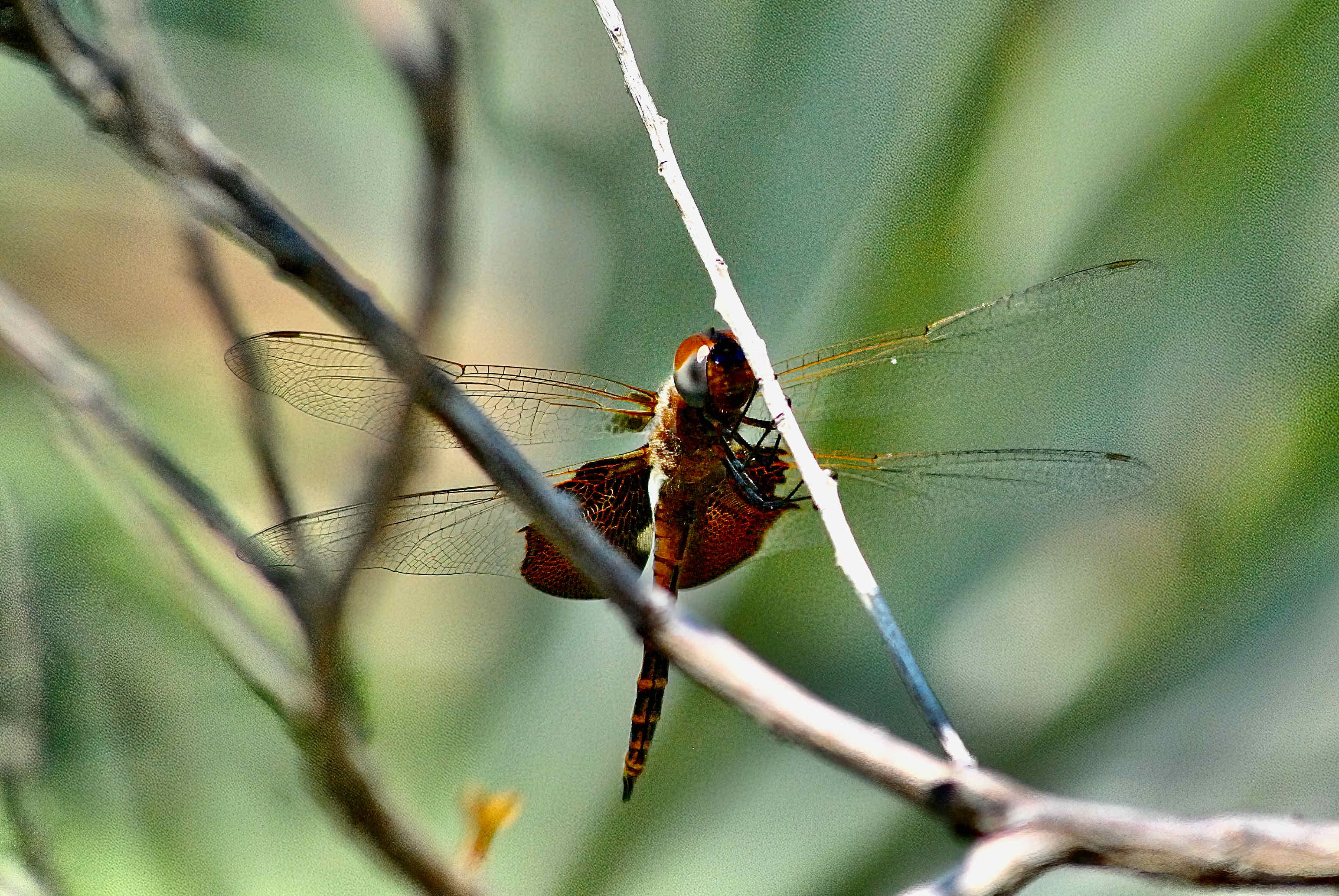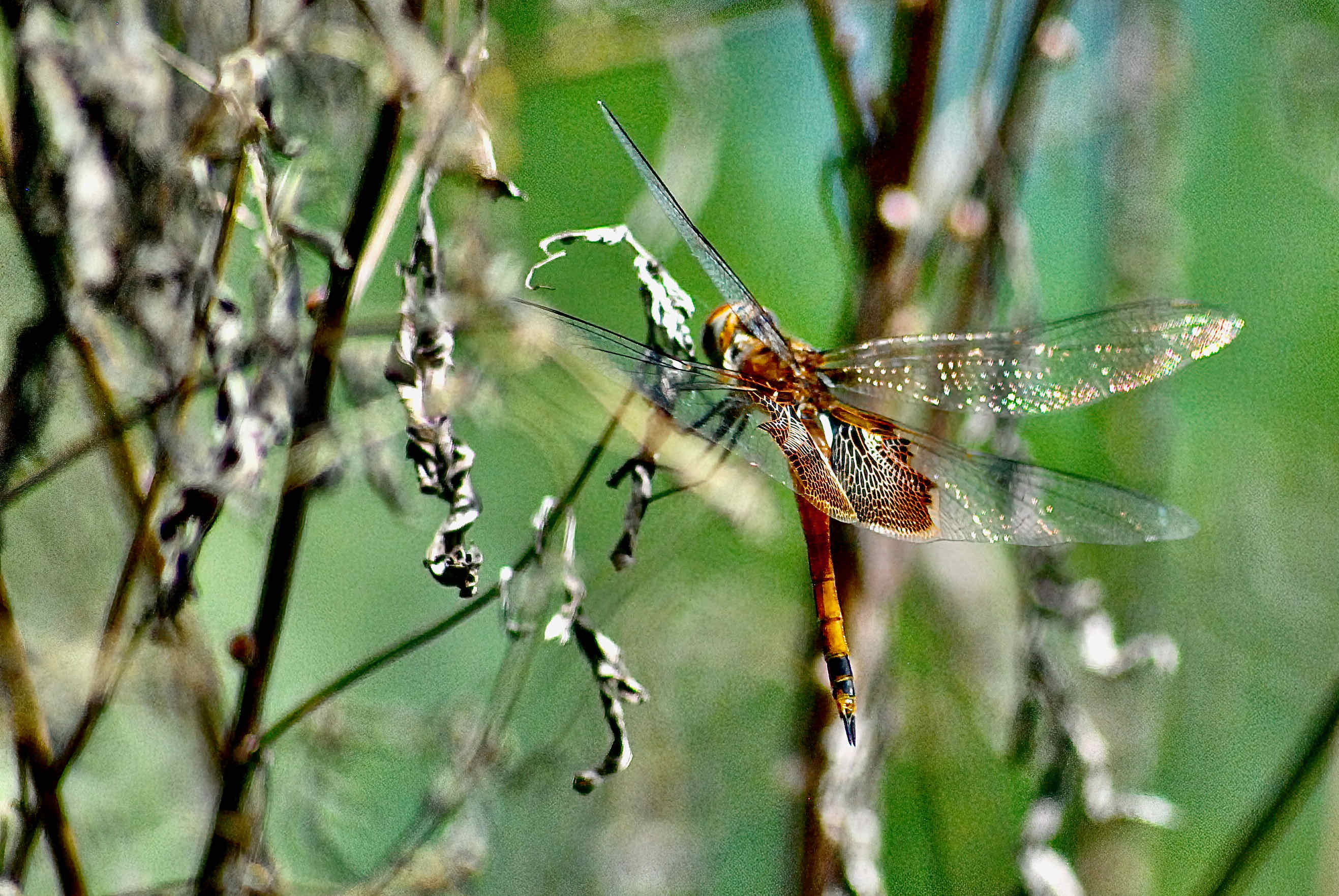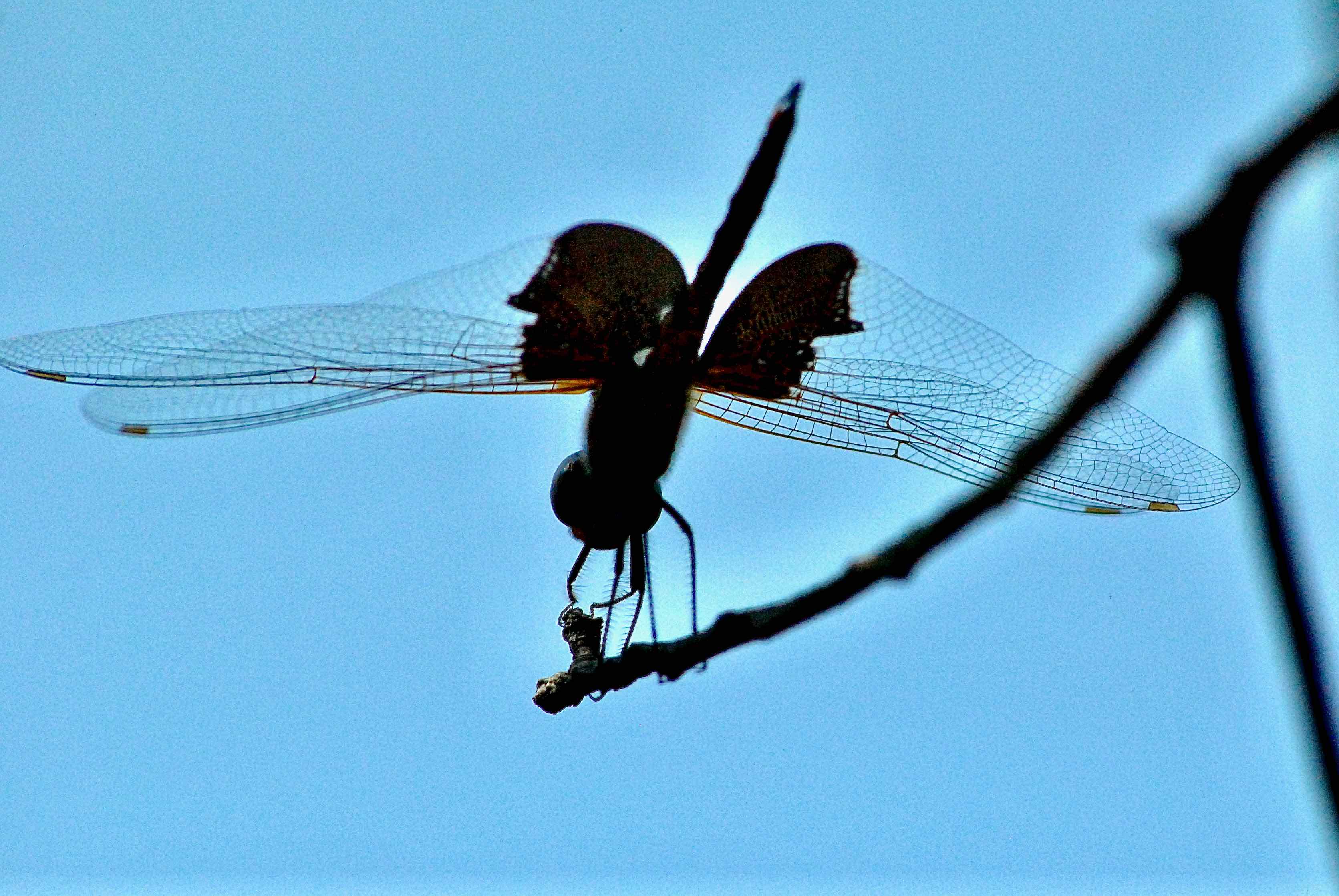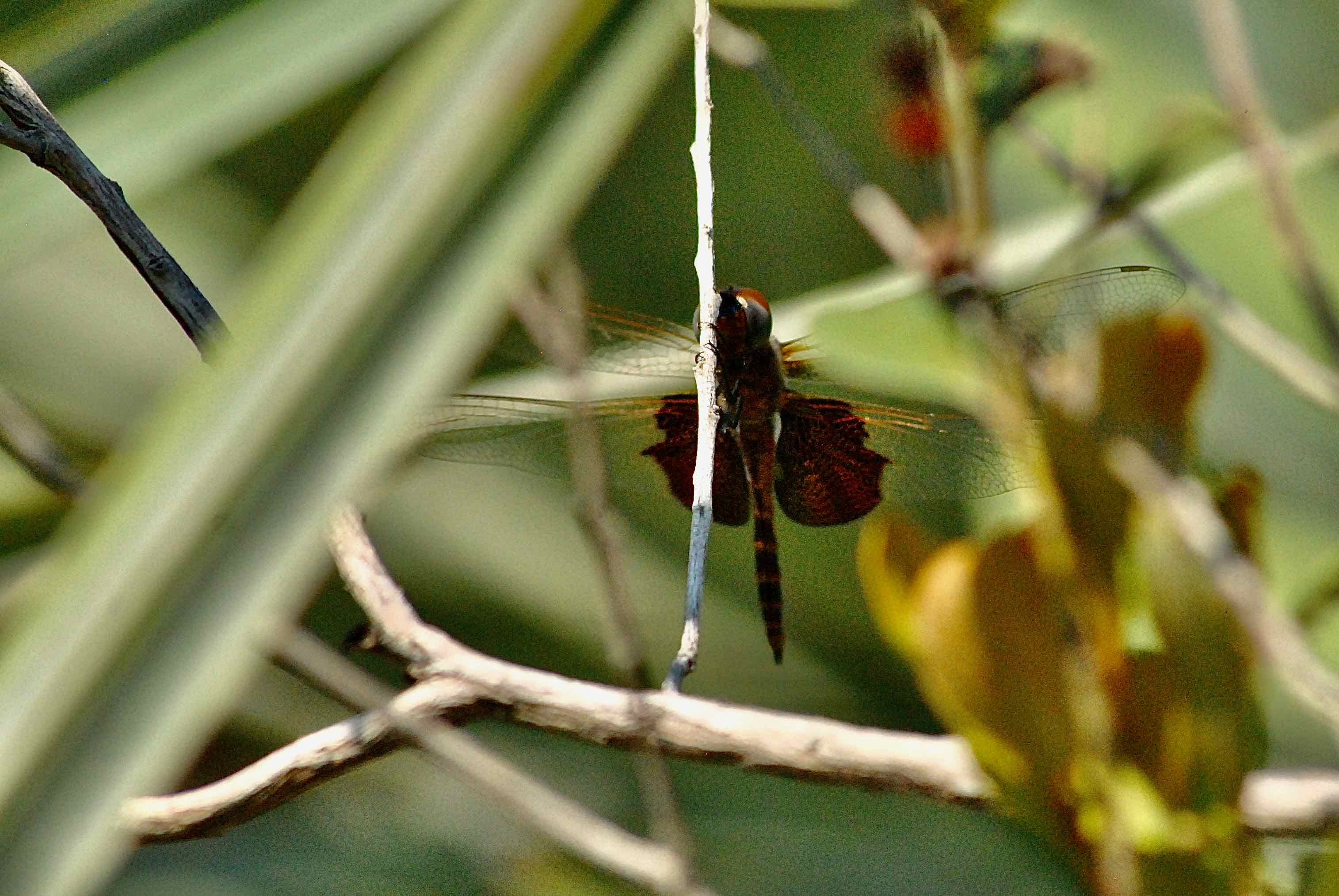
Carolina sanddlebags dragonfly, photographed at Yamato Scrub Natural Area, Boca Raton, Palm Beach County, in August 2013.
It’s not hard to imagine how these dragonflies got their name: the large dark patches on their hind wings that seem to straddle their abdomen like the pack on a horse.
Our guy, the Carolina saddlebags, aka Tramea carolina, is one of seven species of saddlebag dragonflies native to North America. All are members of the genus, Tramea.
Carolina dragonflies are found throughout eastern North America, from Nova Scotia south to Florida and west to Texas. They’re also found in Bermuda. They can be rare, especially in northern portions of their range. In Canada, they’re considered imperiled.
The Carolina saddlebags has a similar looking cousin, the red saddlebags, T onusta, also found in Florida. Both have red wing patches. The easiest difference between the two to discern: the size of the clear spaces in saddlebag patches. The spaces are noticeably larger in the red than in the Carolina. Problem is they don’t alway cooperate and perch at an angle that clearly reveals the patches.
Some notes on saddlebag dragonflies generally: they are divided into two categories, narrow saddlebags and broad saddlebags, depending on the width of the wing patches. Both the Carolina and red saddlebags fall into the broad category.
Saddlebags are large as dragonflies go, with a body length of about two inches. They have broad wings, and they are strong, fast flyers, able to hit speeds of 17 mph. Which, considering their size, is blazing fast.
They are able to fly long distances because of an ability to eat while in the air and because they can store fat, which they can burn while flying. Their young develop quickly into adults, allowing these dragonflies to deposit their eggs in temporary pools of water.
When they mate, the male clasps the female by the back of her head and the two fly in tandem over water to a spot with plenty of emergent vegetation — plants growing out of the water, which will provide cover for their young. The female will detach from the male and fly down to the water’s surface, gently depositing some of her eggs, then return to the male, who’s hovering a couple of feet above, guarding his mate. She’ll repeat the process.
Female saddlebags also can store sperm, so they’re able to deposit eggs on their own without having to mate multiple times.
Like dragonflies generally, the looks of Carolina saddlebags vary by sex and by age. Mature males have a red face with a violet forehead, a brown thorax — the middle section of the body behind the head and where the wings attach — and a bright red abdomen with two black sections near the end.
Females have a dull reddish-brown face, with a hint of violet in the forehead, brown thorax and reddish-brown abdomen. Immature males are similar to females.
On hot days, Carolina saddlebags may perch with their abdomen angled downward, seen in the bottom left photo, as a means of regulating their body temperature. They spend their days feeding in groups.
Favorite habitats include swamps and marshes, shallow ponds and lakes and slow-moving streams with plenty of vegetation. Favorite food: mosquitoes, for which they develop a taste as juveniles.
Carolina saddlebags are also known as violet-masked gliders. They are members of Libellulidae, the family of skimmer dragonflies.
Yamato Scrub Natural Area



